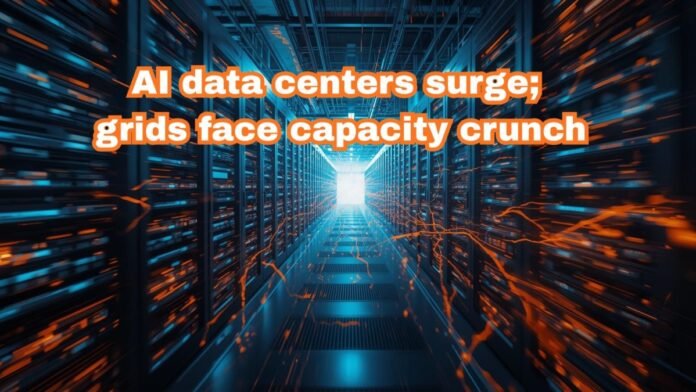
Key points
- Global AI compute demand could reach $200 GW by 2030, with the U.S. contributing nearly half.
- Meeting needs may require around $2 trillion in annual revenue by 2030 to sustainably fund capacity.
- Even after IT-to-cloud savings, an estimated $800 billion funding gap remains for global build‑out.
- Executives may have to execute roughly $500 billion in capex and unlock $2 trillion in new revenue to meet demand profitably.
- Power constraints, export controls, tariffs, and national AI drives are reshaping supply chains.
- Enterprises embedding AI into workflows report $10 25% EBITDA uplift over the past two years.
New Delhi: New analysis estimates AI computing demand could climb to roughly $200 GW by 2030, reflecting rapid adoption of training and inference across industries and the growing share of AI-ready capacity within overall data center loads. The U.S. is projected to account for close to half, driven by hyperscaler expansion, enterprise private clouds, and edge workloads tied to real-time AI services.
Funding gap and revenue needs
Even if on‑premise IT budgets shift to cloud and AI-driven efficiencies are reinvested into infrastructure, the model still shows a sizable shortfall to fully fund the build‑out. The report pegs the gap at approximately $800 billion by 2030 and suggests the sector will require around $2 trillion in annual revenue to support compute, networking, storage, power, cooling, and land costs at scale.
Executive brief: capex and profitability
According to the research, technology leaders face a dual mandate by 2030: execute roughly $500 billion in capital expenditures while generating about $2 trillion in incremental revenue to keep returns attractive. The imbalance between AI workload growth and semiconductor manufacturing capacity implies continued pressure on accelerator supply, total cost of ownership, and delivery timelines.
Power, grids, and siting challenges
The study highlights a looming power constraint as AI clusters push densities that many grids have not planned for in decades. Developers increasingly pair hyperscale campuses with long‑lead interconnects, on‑site generation, long‑term renewable PPAs, grid‑support contracts, advanced liquid cooling, and improved PUE to secure capacity and manage operating costs. Siting decisions now hinge on multi‑factor trade‑offs: grid headroom, land, water, permitting velocity, and proximity to fiber backbones.
Policy and supply-chain shifts
Tariffs, export controls, and national strategies to nurture “indigenous AI” are fragmenting long‑standing technology supply chains. This is altering where accelerators are built and shipped, how networking components are sourced, and where cloud regions expand, with second‑order effects on developer ecosystems and enterprise vendor choices.
Company strategy and benefits
Enterprises are moving beyond pilots to embed AI in core workflows automating operations, augmenting decision‑making, and launching AI‑native products. Reported performance gains show 10% EBITDA uplift over the last two years, with the biggest improvements where firms pair model deployment with process redesign, robust data pipelines, and targeted change management.
Economic and strategic stakes
Advanced AI has shifted from a growth engine to a pillar of national power, influencing industrial policy, workforce development, and security planning. Independent AI capability spanning compute, models, data, and deployment now functions as a strategic advantage on par with economic scale and military strength.
What to watch next
- Power procurement: long‑dated PPAs, grid upgrades, on‑site generation, and demand‑response contracts.
- Chip supply: next‑gen accelerators, high‑bandwidth memory capacity, advanced packaging, and export policy.
- Efficiency curve: model compression, sparsity, inference optimization, and software‑hardware co‑design to flatten cost per token.
- Financing models: JV structures, leaseback, infra funds, and new revenue constructs to bridge the $800 billion gap.
- Regulation: evolving data, privacy, and AI safety rules shaping cost, location, and compliance architectures.





















































